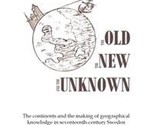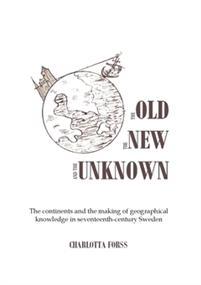Rendered at 17:56:29 05/10/25
The old, the new and the unknown: The continents and the making of geographical
£27.87 GBP
Ships from
Finland

Shipping options
Seller handling time is 5 business days Details
No shipping price specified to GB
Ships from
Finland

Offer policy
OBO - Seller accepts offers on this item.
Details
Return policy
Refunds available: See booth/item description for details
Purchase protection
Payment options
PayPal accepted
PayPal Credit accepted
Venmo accepted
PayPal, MasterCard, Visa, Discover, and American Express accepted
Maestro accepted
Amazon Pay accepted
Nuvei accepted
Shipping options
Seller handling time is 5 business days Details
No shipping price specified to GB
Ships from
Finland

Offer policy
OBO - Seller accepts offers on this item.
Details
Return policy
Refunds available: See booth/item description for details
Purchase protection
Payment options
PayPal accepted
PayPal Credit accepted
Venmo accepted
PayPal, MasterCard, Visa, Discover, and American Express accepted
Maestro accepted
Amazon Pay accepted
Nuvei accepted
Item traits
| Category: | |
|---|---|
| Quantity Available: |
10 in stock |
| Condition: |
New |
| Publisher: |
Stockholm University |
| Authors: |
Forss Charlotta |
| Language: |
English |
| Binding: |
Paperback |
| Category: |
History |
| Pages: |
305 |
| Era/Year: |
2020 |
Listing details
| Seller policies: | |
|---|---|
| Shipping discount: |
Shipping weights of all items added together for savings. |
| Posted for sale: |
More than a week ago |
| Item number: |
1325996023 |
Item description
Sent by Ruslania.com promptly from Helsinki, Finland.Description:This thesis investigates early modern ways of looking at the world through an analysis of what the continents meant in three settings of knowledge making in seventeenth-century Sweden. Combining text, maps and images, the thesis analyses the meaning of the continents in, first, early modern scholarly ?geography?, second, accounts of journeys to the Ottoman Empire and, third, accounts of journeys to the colony New Sweden. The investigation explores how an understanding of conceptual categories such as the continents was intertwined with processes of making and presenting knowledge. In this, the study combines approaches from conceptual history with research on knowledge construction and circulation in the early modern world. The thesis shows how geographical frameworks shifted between settings. There was variation in what the continents meant and what roles they could fill. Rather than attribute this flexibility to random variation or mistakes, this thesis interprets flexibility as an integral part of how the world was conceptualized. Religious themes, ideas about societal unities, definitions of old, new and unknown knowledge, as well as practical considerations, were factors that in different way shaped what the continents meant. A scheme of continents ? usually consisting of the entities ?Africa,? ?America,? ?Asia,? ?Europe? and the polar regions ? is a part of descriptions about what the world looks like today. In such descriptions, the continents are often treated as existing outside of history. However, like other concepts, the meaning and significance of these concepts have changed drastically over time and between contexts. This fact is a matter of importance for historians, but equally so for a wider public using geographical categories to understand the world. Concepts such as the continents may describe what the world looks like, yet they can create both boundaries and affiliations far beyond land and sea.Charlotta Forss is a historian at Stockholm University. This is her doctoral thesis.
Added to your wish list!

- The old, the new and the unknown: The continents and the making of geographical
- 10 in stock
- Price negotiable
- Handling time 5 days.
- Returns/refunds accepted
Get an item reminder
We'll email you a link to your item now and follow up with a single reminder (if you'd like one). That's it! No spam, no hassle.
Already have an account?
Log in and add this item to your wish list.



